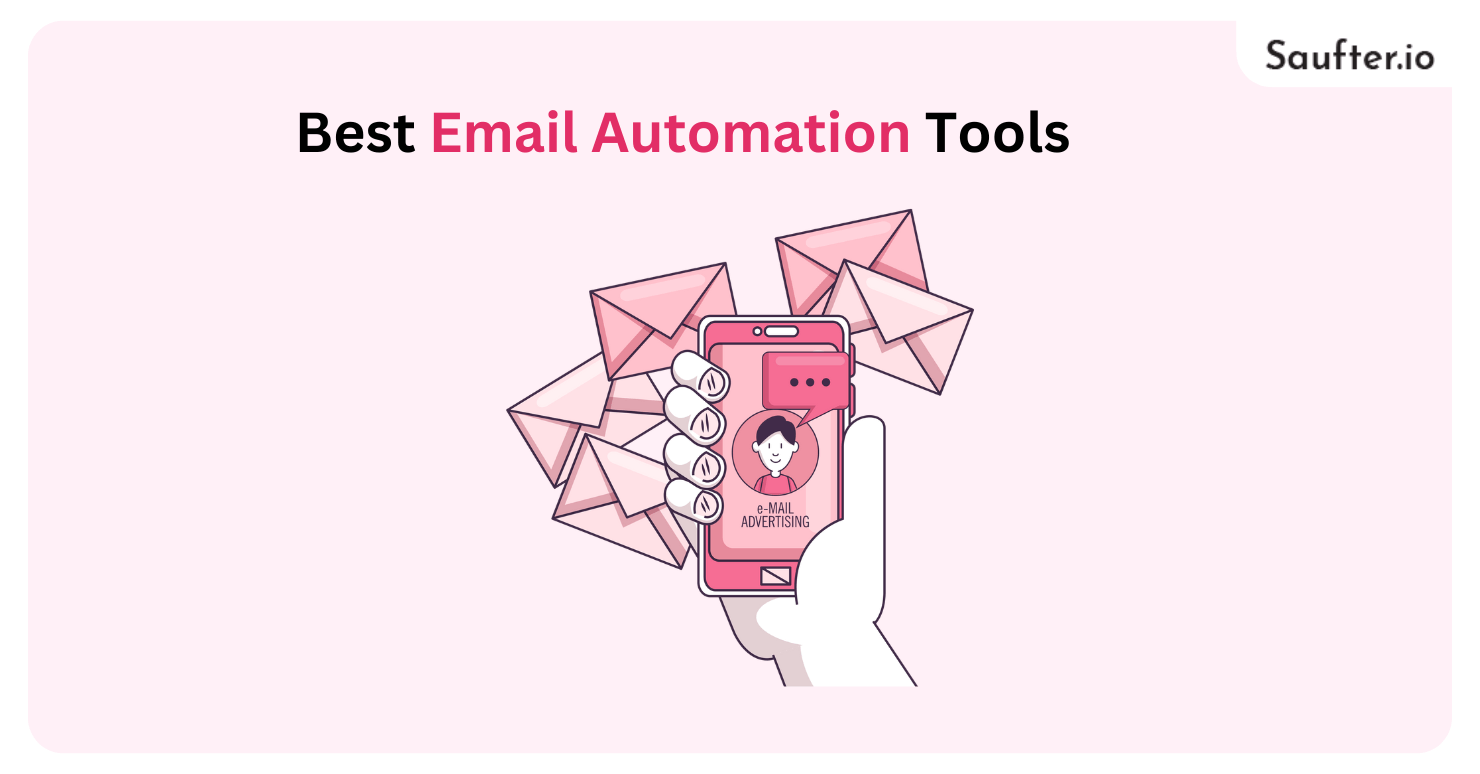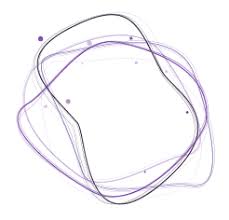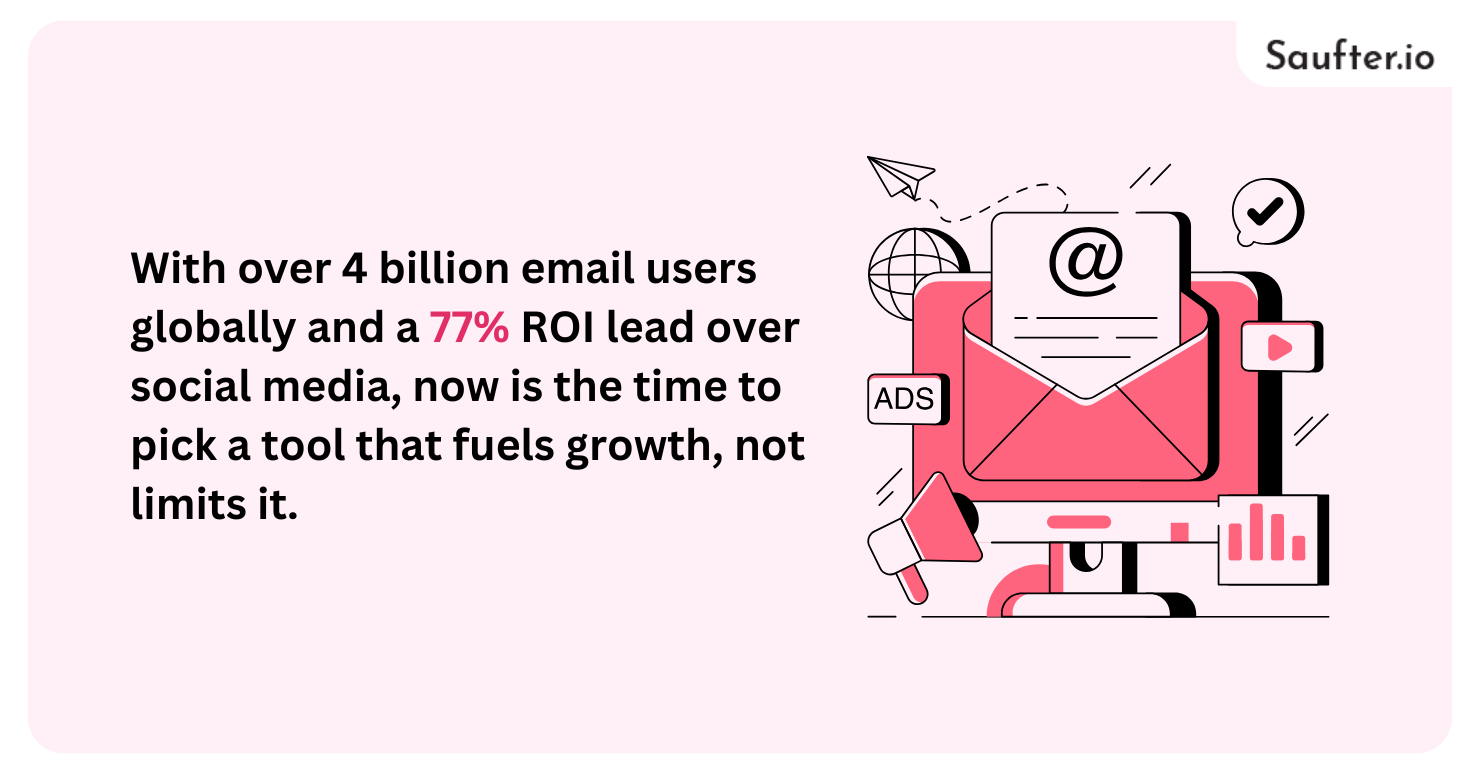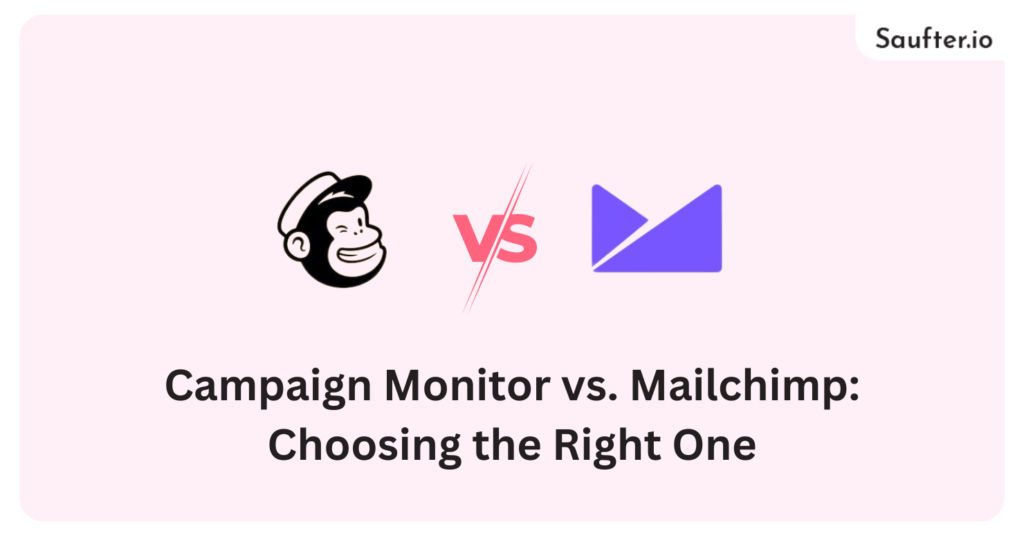Last Updated: December 2025
Email marketing continues to be one of the highest ROI channels, with businesses earning $36 for every $1 spent, according to Litmus. But choosing the right platform can feel overwhelming. Among the top contenders are Campaign Monitor vs Mailchimp, two well-known email marketing solutions built for ease, performance, and scalability.

If you’re struggling to pick between them, you’re not alone. Both tools serve small to medium-sized businesses well, but they differ in features, pricing, automation, and more. In this blog, we’ll compare them head-to-head to help you decide which fits your goals best. To give you a complete picture, we’ve also brought in a third player, GetResponse, for context.
What We’ll Compare
We’ve evaluated Campaign Monitor vs Mailchimp across the following key categories:
- Ease of Use
- Features & Automation
- Customer Support
- Templates & Landing Pages
- Pricing & Value
- Analytics
Let’s break it down.
1. Ease of Use
Both platforms offer intuitive drag-and-drop email builders and user-friendly interfaces. Mailchimp earns extra points for its streamlined dashboard and helpful onboarding flow. However, Campaign Monitor also delivers a clean experience, especially for beginners.
- Mailchimp Ease of Use Score: 4.5/5
- Campaign Monitor Ease of Use Score: 4.5/5
Verdict: Tie. If you’re new to email marketing, either platform will work well.
2. Features & Automation
Here’s where the tools begin to diverge.
Mailchimp includes multichannel campaign features such as Facebook ads, Google ads, and even postcards. It also supports basic automation like welcome emails and abandoned cart flows, though advanced workflows require higher-tier plans.
Campaign Monitor shines in data segmentation and personalization, offering the ability to target multiple lists and audience types. However, automation is relatively limited, especially at lower price points.
Feature | Mailchimp | Campaign Monitor |
Automation Workflows | ✅ (Paid only) | ✅ (Limited) |
Drag-and-Drop Builder | ✅ | ✅ |
SMS Marketing | ❌ | ✅ |
Social Media Ads | ✅ | ❌ |
AI Personalization | ❌ | ❌ |
Verdict: Mailchimp wins for versatility. Campaign Monitor offers simpler automation, but lacks multichannel options.
3. Customer Support
Here’s a major differentiator. Mailchimp provides 24/7 email and chat support. In contrast, Campaign Monitor offers limited support unless you upgrade to the Premier plan.
- Mailchimp Support Score: 4.3/5
- Campaign Monitor Support Score: 3/5
Verdict: Mailchimp takes the lead in customer support accessibility.
4. Templates & Landing Pages
Both platforms offer hundreds of templates. Campaign Monitor integrates with Unsplash, giving users easy access to free, high-quality images. Meanwhile, Mailchimp’s Creative Assistant can help generate visuals, but it is often hit or miss.
When it comes to landing page builders, Mailchimp supports basic creation, while Campaign Monitor does not include a landing page builder by default.
Verdict: Slight edge to Mailchimp for more landing page options.
5. Pricing & Value
When comparing Campaign Monitor vs Mailchimp pricing, the differences become clearer at scale.
Plan Comparison (2,000 contacts) | Mailchimp | Campaign Monitor |
Starter Plan | $45/month | $39/month |
Medium Plan | $60/month | $59/month |
Enterprise Plan | $350/month | $149/month |
Mailchimp offers a free tier, but it’s extremely limited (1 automation, 1 audience). Campaign Monitor’s pricing increases steeply with contact count and offers fewer features in the Basic plan.
Verdict: Neither is the cheapest. If you want more features at lower costs, GetResponse ($29 for 2,000 contacts) may be a better fit.
6. Analytics & Reporting
Campaign Monitor offers visually rich analytics that can be exported as PDFs, great for agencies and consultants. Mailchimp provides email performance metrics, though deeper insights (comparative reports, advanced segmentation) require a Premium plan.
Verdict: Campaign Monitor edges out slightly here for its clear, downloadable reports.
Overall Scores Comparison
Evaluation Metric | Mailchimp | Campaign Monitor |
Ease of Use | 4.5 | 4.5 |
Features | 4.0 | 4.0 |
Customer Support | 4.3 | 3.0 |
Sales Funnel Capabilities | 4.0 | 4.0 |
Pricing | 3.0 | 3.0 |
Total Score | 3.96 | 3.7 |
Final Thoughts: Which One Should You Choose?
Go with Mailchimp if:
- You need a simple email builder and ad campaign tools.
- You rely on social integrations (Facebook, Instagram).
- You want 24/7 support and CRM-style features.
Go with Campaign Monitor if:
- You prefer a clutter-free interface and quick setup.
- You work in a data-heavy role and need multi-list segmentation.
- You want straightforward reporting tools.
Best Email Automation Tools

When it comes to scaling your email marketing, automation is no longer a luxury; it’s essential. Whether you’re nurturing leads, sending behavior-triggered emails, or building complex workflows, your choice of tool determines how efficient and profitable your campaigns can be. If you’re searching for the best Mailchimp alternatives or Campaign Monitor alternatives, the following platforms are worth exploring.
1. Saufter – AI-Powered Email Automation Platform

Saufter is an advanced AI email marketing platform built to intelligently automate the entire email lifecycle. It combines competitor tracking, website behavior analysis, and cohort suggestions to help businesses deliver hyper-personalized campaigns effortlessly.
Key Features:
- Competitor campaign tracking and analysis
- AI studies user behavior and journey stages
- Personalized email generation to improve deliverability
- Segment and cohort suggestions based on campaign/web engagement
- Trigger flows like cart abandonment, trial feature usage, or order delivery
Why It’s a Top Alternative:
Saufter stands out among the best Mailchimp alternatives and Campaign Monitor alternatives with affordable pricing, built-in AI, and advanced behavior tracking features.
2. GetResponse – Full-Funnel Email Automation

GetResponse is not just an email marketing platform, it’s a full-fledged marketing automation suite. It offers prebuilt workflows, behavior-based segmentation, conversion funnels, and even webinar hosting. What makes GetResponse a strong Campaign Monitor alternative is its deep automation at lower price tiers.
Key Features:
- Visual workflow builder
- AI-driven segmentation and email content suggestions
- Integrated landing pages and signup forms
- Conversion funnel tracking
Why It’s a Top Pick:
GetResponse shines for businesses looking to unify email with landing pages, eCommerce, and ads, all in one tool. With plans starting at $29/month for 2,000 contacts, it delivers more value than both Mailchimp and Campaign Monitor.
3. ActiveCampaign – Best for Advanced Automation

If deep automation is your priority, ActiveCampaign is one of the best Mailchimp alternatives. It provides sophisticated workflows, CRM integration, conditional content, and lead scoring features that go far beyond basic email triggers.
Key Features:
- Powerful visual automation builder
- Native CRM and sales automation
- Predictive sending and site tracking
Conditional content blocks
Why It’s a Campaign Monitor Alternative:
Campaign Monitor lacks the advanced automation and CRM functionality ActiveCampaign offers. For scaling SaaS or service-based businesses, ActiveCampaign is ideal.
4. MailerLite – Simplicity Meets Automation

For users overwhelmed by feature-heavy tools, MailerLite offers a clean and minimalistic approach without compromising on automation. It’s perfect for startups or creators wanting affordable automation workflows without a steep learning curve.
Key Features:
- Easy-to-use drag-and-drop editor
- Automation builder with behavior triggers
- Landing page and pop-up forms
- Affordable pricing with a generous free plan
Why It’s a Strong Mailchimp Alternative:
MailerLite’s pricing and ease of use make it a practical alternative to Mailchimp, especially for smaller businesses that don’t need multichannel campaigns.
5. Moosend – Budget-Friendly Email Automation

Moosend is another excellent Campaign Monitor alternative, offering powerful features at a fraction of the cost. It supports advanced automation with pre-built recipes, real-time analytics, and eCommerce integrations.
Key Features:
- Automation templates for eCommerce and lead generation
- Product recommendations and cart abandonment flows
- Real-time analytics dashboard
- Pay-as-you-go or monthly plans
Why Choose Moosend:
It’s ideal for users who need robust automation without paying premium platform fees. Moosend balances power and simplicity well.
Conclusion

In the Campaign Monitor vs Mailchimp debate, the best choice depends on your needs. For basic email marketing with support and ads, Mailchimp is the winner. If analytics and clean UI matter more, Campaign Monitor works well.
But if you’re looking for automation, sales funnels, and more for less, Saufter is the all-in-one alternative.
With over 4 billion email users globally and a 77% ROI lead over social media, now is the time to pick a tool that fuels growth, not limits it.
















